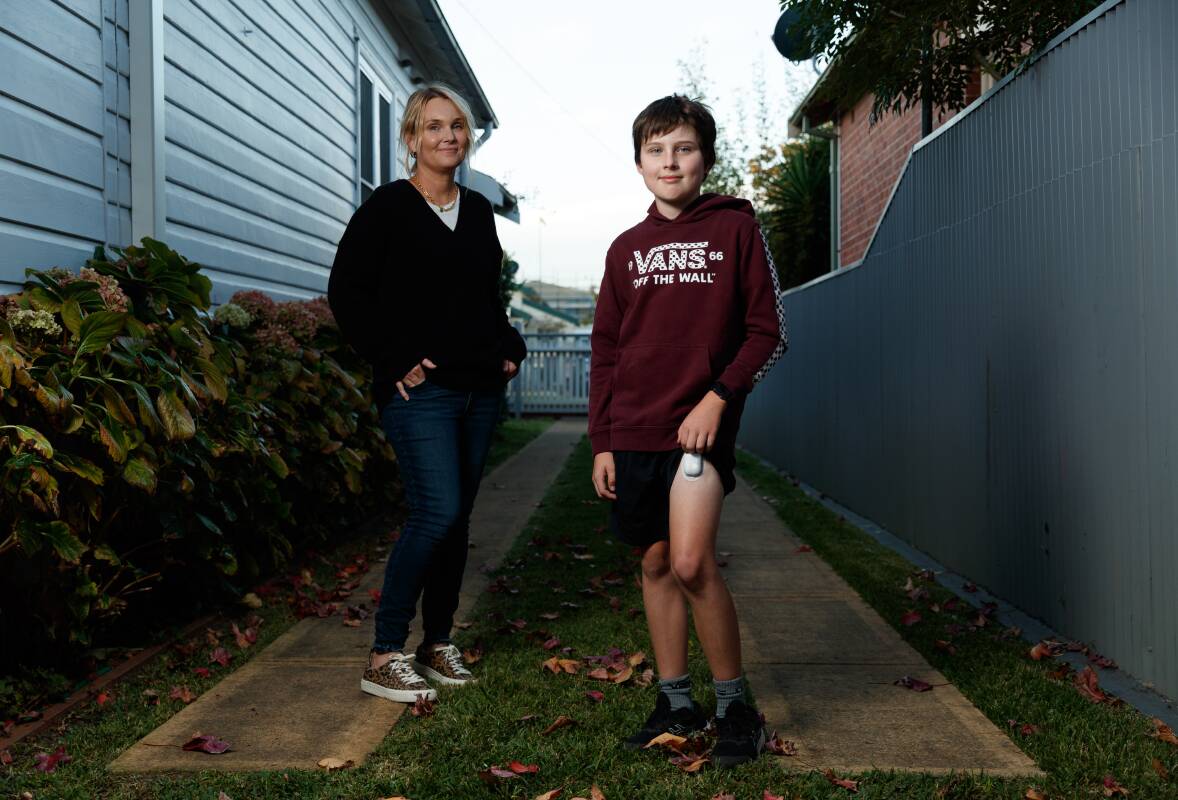
A "sanity saving" tubeless pump that has given 11-year-old Ash Anderson more freedom and independence should be more accessible for people with type 1 diabetes, his family says.
But the device is not supported by the National Diabetes Services Scheme (NDSS). It is not funded by private health insurance, and it cannot be accessed via the public hospital system.
So it costs users in Australia more than $400 a month.
"It is a ridiculous amount of money, but that's the price I was willing to pay for our sanity and a better quality of life for my son," Libby Anderson, Ash's mother, said. "But it's just not sustainable."
The Newcastle family faced a steep learning curve when Ash was diagnosed with type 1 diabetes five years ago.
Essentially, carbohydrates made his blood sugar go up, and insulin brought it down - but it was a delicate balance.
"If he's left high for long periods of time he might get complications later in life, like nerve damage, kidney damage, eye damage," she said. "If he goes too low it's more immediate - he'll get confused, dizzy, have a seizure and it could result in death if it is really severe."
The family needed to learn how to balance how many carbohydrates, fats and proteins Ash would be eating at each meal with his blood sugar, while factoring in whether he would be active or sedentary afterwards, to work out how much insulin to give. Occasionally, Ash has needed up to 10 injections a day to keep his blood glucose within a safe range.

"I felt terrible every time I had to say to him, 'I'm sorry we'll have to do another injection' because he wanted another taco at dinner, or his friends were going for ice cream after school," Ms Anderson said. "We knew we could get better control with an insulin pump, because he wouldn't have to weigh up whether something was worth an injection every time he did something. But the only pump the hospital offered had a long plastic tube attached to a controller that looked like a pager from the '90s. It was very medical-looking, and I was worried the tube would get caught on something while he was playing with his brother, or playing sport."
Ms Anderson discovered a tubeless insulin pump known as the Omnipod DASH that was small and waterproof and had been approved by the TGA for use in Australia. It had no tubing. It was small, discreet and waterproof. And it made it easier for Ash to manage his Type 1 while at school and overnight. While living in the US for 12 months, the family got to experience the pump being covered by private health insurance. But it was a different story back in Australia, which was failing to "keep up with the times".
"In the US they cover Omnipod both through private health insurance and Medicaid, and in the UK it's covered by the NHS," she said.
"People with type 1 have no choice but to use man made insulin - I just don't think we should have to fight for a choice and access to technology that actually makes a massive difference to quality of life. People shouldn't have to weigh up whether they can afford it."






